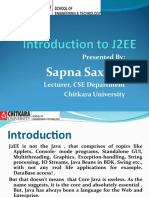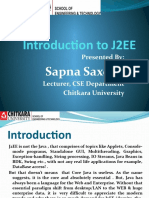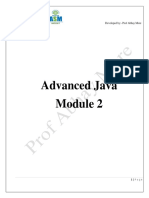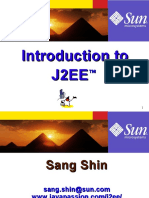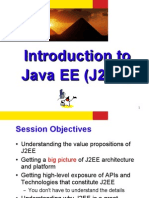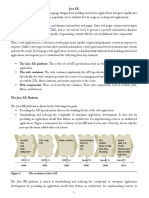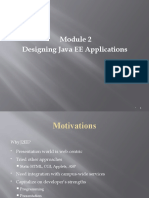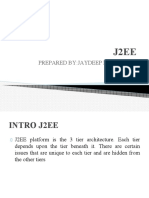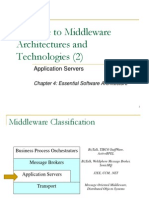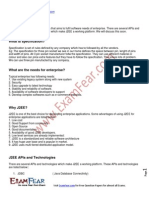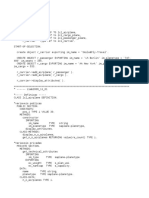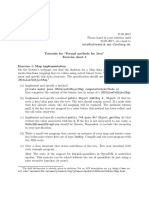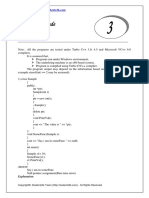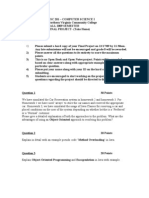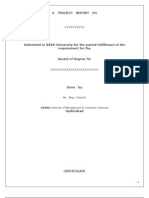0% found this document useful (0 votes)
59 views46 pagesUnit 1
The document provides an introduction to Java and its key aspects including the Java programming language, runtime environment, virtual machine, and platform. It discusses Java's object-oriented features and goals. It also covers enterprise architecture types like single-tier, 2-tier, 3-tier, and n-tier architectures and compares 2-tier vs 3-tier. The document lists some Java EE APIs like EJB, servlets, JSP, JSF, JMS, JTA, and JavaMail and provides brief descriptions of each.
Uploaded by
Parekh DhruvilCopyright
© © All Rights Reserved
We take content rights seriously. If you suspect this is your content, claim it here.
Available Formats
Download as PDF, TXT or read online on Scribd
0% found this document useful (0 votes)
59 views46 pagesUnit 1
The document provides an introduction to Java and its key aspects including the Java programming language, runtime environment, virtual machine, and platform. It discusses Java's object-oriented features and goals. It also covers enterprise architecture types like single-tier, 2-tier, 3-tier, and n-tier architectures and compares 2-tier vs 3-tier. The document lists some Java EE APIs like EJB, servlets, JSP, JSF, JMS, JTA, and JavaMail and provides brief descriptions of each.
Uploaded by
Parekh DhruvilCopyright
© © All Rights Reserved
We take content rights seriously. If you suspect this is your content, claim it here.
Available Formats
Download as PDF, TXT or read online on Scribd
/ 46
